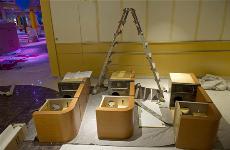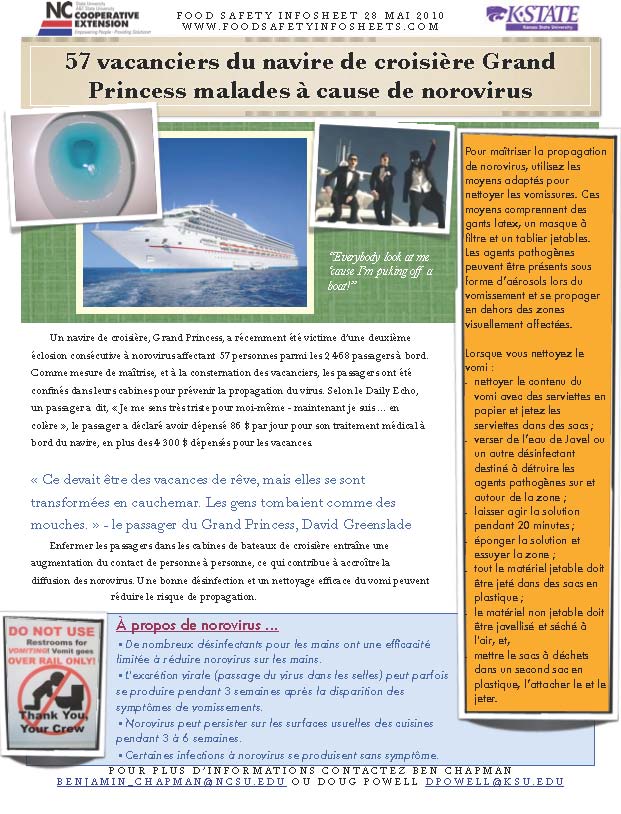My parents got the cruise fever later in life, but I’m not sure I can convince them to ship to Australia; maybe too close to my father’s family who, while not poor enough to get shipped to the colony, were poor enough to get sent to Wales.
And then there’s that food safety thing.
Cruise Critic reports that cinnamon sticks stored next to a baited roach trap, blocks of nonpotable carving ice in contact with containers of ice cream and more than a dozen live flies were recently discovered on Veendam by health inspectors from the Centers  for Disease Control and Prevention. Those and over 100 other infractions earned the Holland America ship a failing score of 77 out of 100 on its August 19 vessel sanitation inspection.
for Disease Control and Prevention. Those and over 100 other infractions earned the Holland America ship a failing score of 77 out of 100 on its August 19 vessel sanitation inspection.
The CDC’s surprise cruise ship cleanliness exam is conducted twice a year, with an 86 considered passing.
In a detailed report, inspectors documented finding live flies in a pastry dry stores locker, a provisions room, a prep room and numerous galleys throughout the ship. The report recommended that crew effectively control the presence of insects, rodents and other pests to minimize their presence in the food storage, preparation and service areas.
Inspectors also found a number of washing and food storage devices, including refrigerators and dishwashing machines, were in need of repair. A leak in a water line directly above one dishwashing machine resulted in water dripping into the machine and contaminating clean dishes after they were sanitized. According to the report, workers were then observed taking contaminated dishes and putting them into clean storage racks.

 restaurants.
restaurants..jpg)
 alimentaire qui cible ceux qui préparent les aliments. Elle est disponible sur le site : www.foodsafetyinfosheets.com
alimentaire qui cible ceux qui préparent les aliments. Elle est disponible sur le site : www.foodsafetyinfosheets.com  un segundo brote consecutivo de Norovirus, en el cual 57 de los 2,468 pasajeros a bordo contrajeron dicho virus.
un segundo brote consecutivo de Norovirus, en el cual 57 de los 2,468 pasajeros a bordo contrajeron dicho virus..jpg) Passengers aboard the Grand Princess liner started to become violently sick just moments after the boat set sail from Southampton.
Passengers aboard the Grand Princess liner started to become violently sick just moments after the boat set sail from Southampton. 765 crew members aboard the Vision of the Seas, operated by Royal Caribbean International, who were
765 crew members aboard the Vision of the Seas, operated by Royal Caribbean International, who were 
 USA Today today reports
USA Today today reports The decline, moreover, came even as the number of people cruising continued to rise. The Cruise Lines International Association says the industry carried 13.2 million passengers in 2008, the last year for which data is available, up from 12.6 million in 2007 and 12.0 million in 2006.
The decline, moreover, came even as the number of people cruising continued to rise. The Cruise Lines International Association says the industry carried 13.2 million passengers in 2008, the last year for which data is available, up from 12.6 million in 2007 and 12.0 million in 2006. But what about on cruise ships?
But what about on cruise ships?